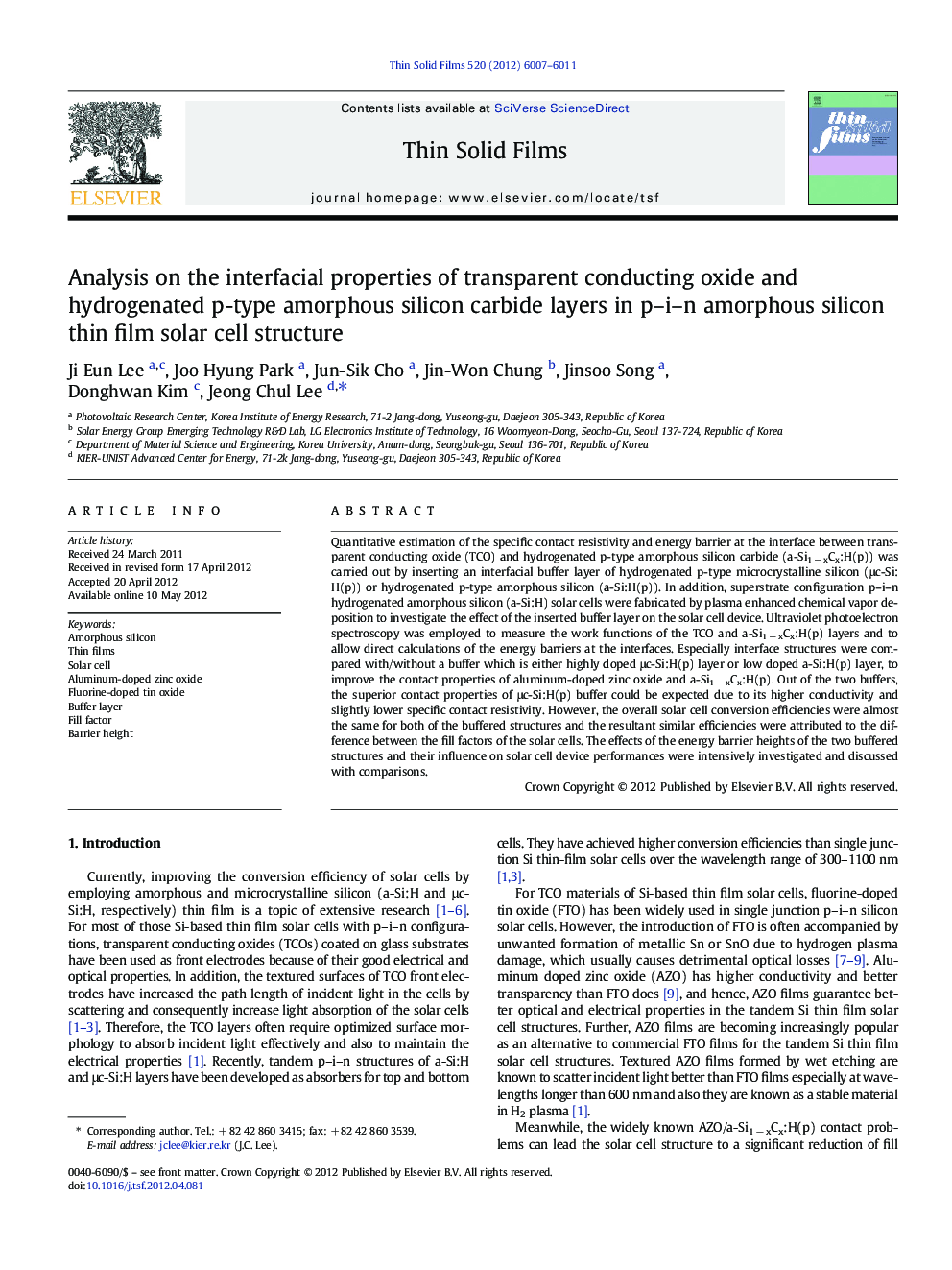| Article ID | Journal | Published Year | Pages | File Type |
|---|---|---|---|---|
| 1667140 | Thin Solid Films | 2012 | 5 Pages |
Quantitative estimation of the specific contact resistivity and energy barrier at the interface between transparent conducting oxide (TCO) and hydrogenated p-type amorphous silicon carbide (a-Si1 − xCx:H(p)) was carried out by inserting an interfacial buffer layer of hydrogenated p-type microcrystalline silicon (μc-Si:H(p)) or hydrogenated p-type amorphous silicon (a-Si:H(p)). In addition, superstrate configuration p–i–n hydrogenated amorphous silicon (a-Si:H) solar cells were fabricated by plasma enhanced chemical vapor deposition to investigate the effect of the inserted buffer layer on the solar cell device. Ultraviolet photoelectron spectroscopy was employed to measure the work functions of the TCO and a-Si1 − xCx:H(p) layers and to allow direct calculations of the energy barriers at the interfaces. Especially interface structures were compared with/without a buffer which is either highly doped μc-Si:H(p) layer or low doped a-Si:H(p) layer, to improve the contact properties of aluminum-doped zinc oxide and a-Si1 − xCx:H(p). Out of the two buffers, the superior contact properties of μc-Si:H(p) buffer could be expected due to its higher conductivity and slightly lower specific contact resistivity. However, the overall solar cell conversion efficiencies were almost the same for both of the buffered structures and the resultant similar efficiencies were attributed to the difference between the fill factors of the solar cells. The effects of the energy barrier heights of the two buffered structures and their influence on solar cell device performances were intensively investigated and discussed with comparisons.
► Decrease of fill factor due to high contact resistance of Al:ZnO/a-SiC:H(p) interface. ► Insertion of buffer layer (μc-Si or a-Si) between Al:ZnO and p-layer for comparison. ► μc-Si:H(p) buffer with high conductivity has better fill factor but higher barrier. ► a-Si:H(p) buffer with low conductivity forms lower barrier and better fill factor.
